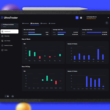Trading isn’t just about buying and selling. It’s about making smart choices based on facts and numbers. To excel in trading, especially in the Forex market, traders need to monitor specific trading metrics that reflect their performance. This guide covers the key metrics every trader should track and explains how they can help improve your trading strategy.
1. Win Rate (WR): How Often You Win
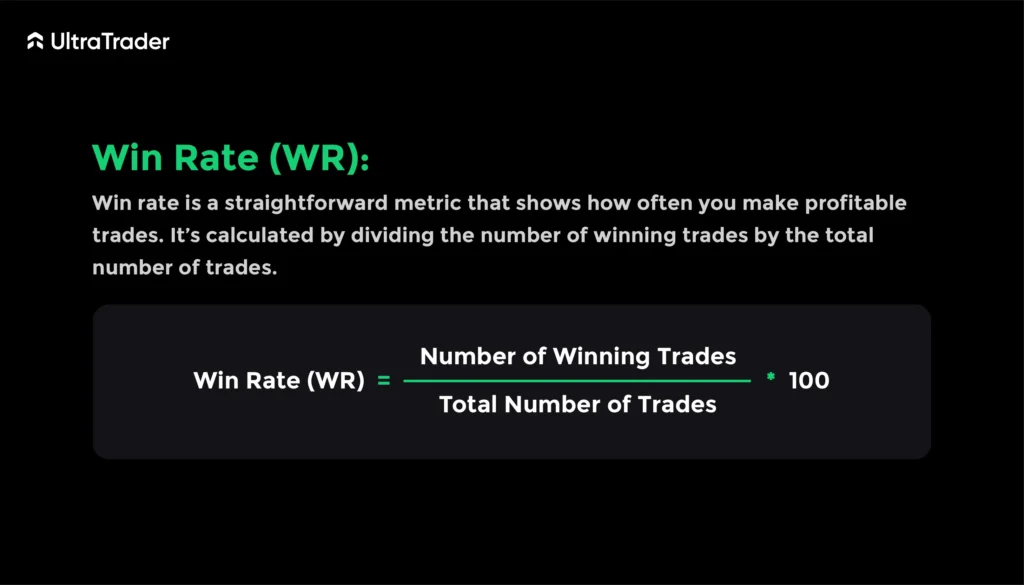
Win rate is a straightforward metric that shows how often you make profitable trades. It’s calculated by dividing the number of winning trades by the total number of trades.
Win Rate Calculation Formula
Win Rate = (Number of Winning Trades / Total Number of Trades) × 100
A higher win rate is favorable, but it doesn’t tell the whole story. Even if you win frequently, you can still end up losing money if your losses outweigh your gains.
Why Win Rate Matters
Knowing your win rate is crucial because it indicates whether your trading strategy is working. However, to get a full picture of your trading performance, you must consider both your win rate and other metrics, such as the risk-reward ratio.
2. Risk-Reward Ratio (RR): Balancing Risk and Reward
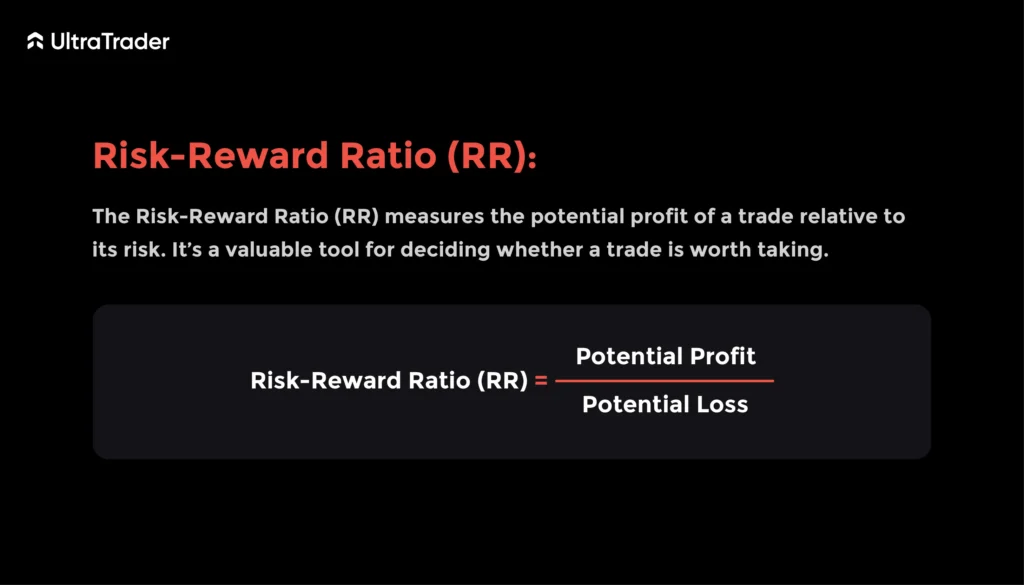
The Risk-Reward Ratio (RR) measures the potential profit of a trade relative to its risk. It’s a valuable tool for deciding whether a trade is worth taking.
How to Calculate RR
- Divide the potential profit by the potential loss.
- For example, if you could make $3 but risk losing $1, the RR is 3:1.
Pro tip: Using an advanced Trading Journal such as UltraTrader can help you find RR without manual calculation.
Why is RR Important?
- Even with fewer wins: A high RR means your wins can cover your losses, even if your win rate is lower.
- Risk management: Tracking your RR helps ensure you’re not taking excessive risks on any single trade.
3. Expected Value (EV): Predicting Profitability
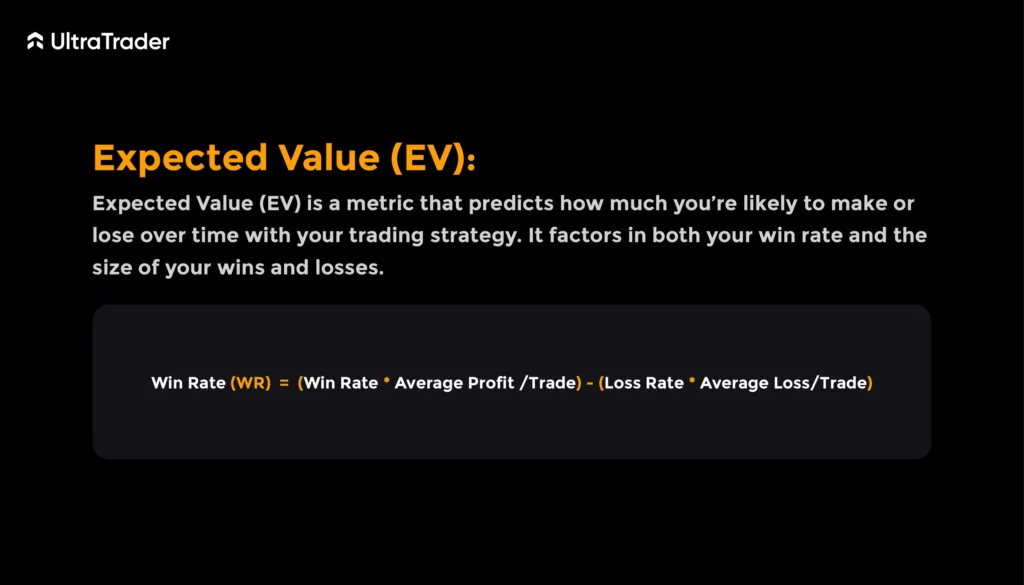
Expected Value (EV) is a metric that predicts how much you’re likely to make or lose over time with your trading strategy. It factors in both your win rate and the size of your wins and losses.
How to Calculate EV
EV = (Win Rate × Average Profit per Trade) – (Loss Rate × Average Loss per Trade)
Why is EV Important?
- Long-term profitability: EV helps you understand if your strategy is likely to be profitable over time.
- Strategy evaluation: It’s useful for comparing different strategies to see which one is more profitable.
4. Total P&L: Measuring Overall Success
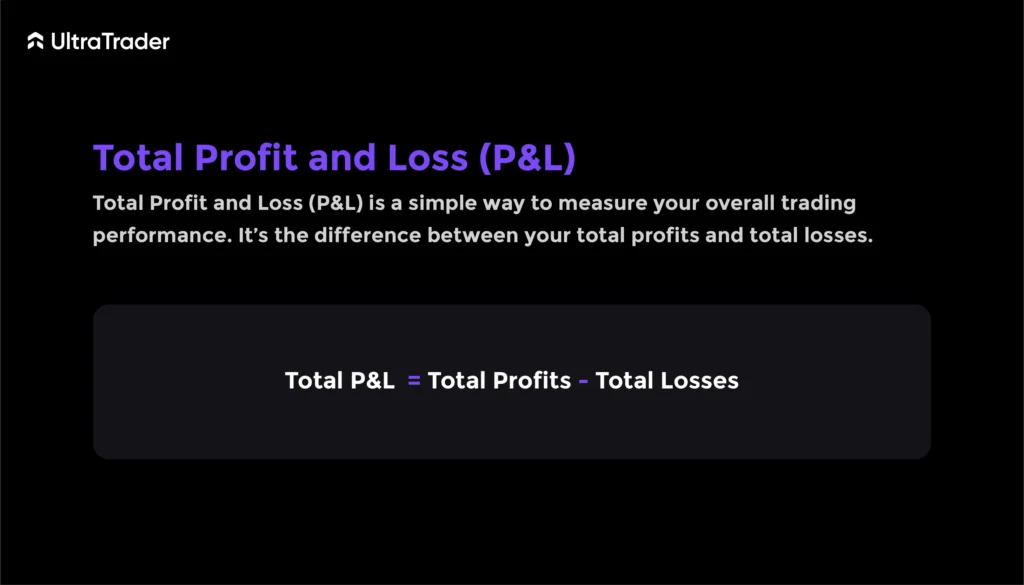
Total Profit and Loss (P&L) is a simple way to measure your overall trading performance. It’s the difference between your total profits and total losses.
How to Calculate Total P&L
Total P&L = Total Profits – Total Losses
Why is Total P&L Important?
- Overall performance: Total P&L shows whether your trading is profitable or not.
- Trend identification: You can see if your performance is improving or declining over time.
5. Return on Investment (ROI): Measuring Efficiency
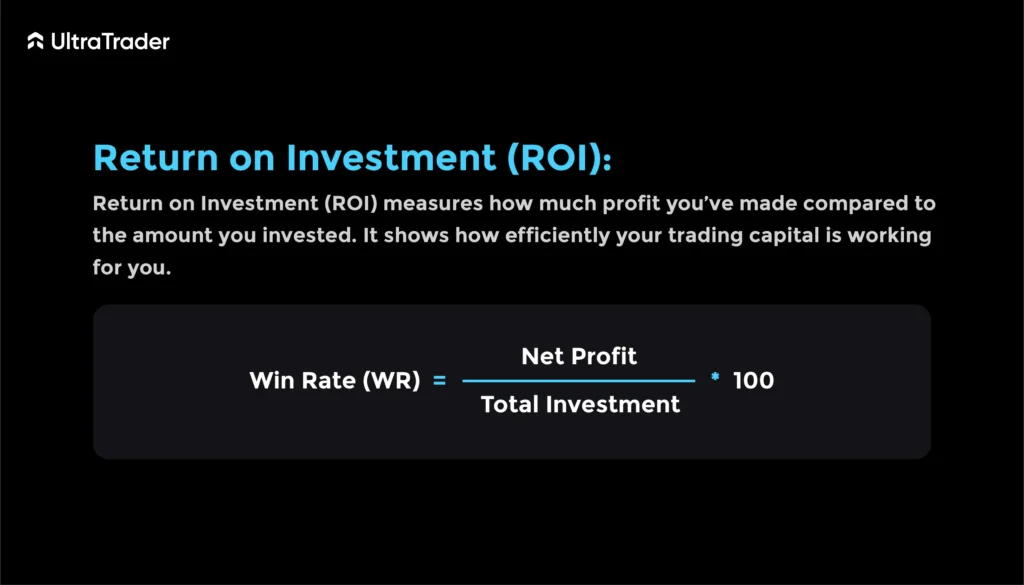
Return on Investment (ROI) measures how much profit you’ve made compared to the amount you invested. It shows how efficiently your trading capital is working for you.
How to Calculate ROI
ROI = (Net Profit / Total Investment) × 100
Why is ROI Important?
- Efficiency: ROI shows how well you’re using your money.
- Comparison: It allows you to compare the profitability of different investments or strategies.
6. Risk Percentage: Protecting Your Capital
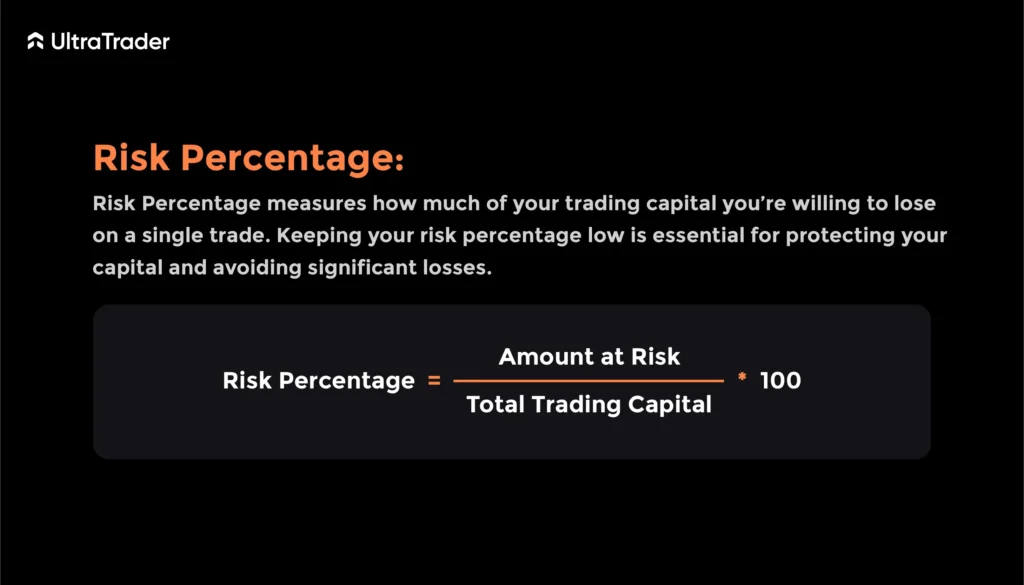
Risk Percentage measures how much of your trading capital you’re willing to lose on a single trade. Keeping your risk percentage low is essential for protecting your capital and avoiding significant losses.
How to Calculate Risk Percentage
Risk Percentage = (Amount at Risk / Total Trading Capital) × 100
Why is Risk Percentage Important?
- Capital preservation: A low risk percentage helps protect your money.
- Long-term success: Consistent risk management is key to maintaining profitability over the long term.
Why Tracking These Metrics is Essential
The metrics discussed—Win Rate, Risk-Reward Ratio, Expected Value, Total P&L, ROI, and Risk Percentage—form the backbone of a solid trading strategy. Consistently tracking these metrics in a Trading Journal is crucial for several reasons:
- Data-Driven Decisions: Make informed decisions based on historical data rather than emotions.
- Performance Analysis: Analyze your performance over time to identify strengths and weaknesses.
- Strategy Refinement: Regularly review these metrics to refine and improve your trading strategy.
- Risk Management: Track risk-related metrics to ensure effective capital management.
- Long-Term Profitability: Focus on metrics that promote sustainable, long-term profitability.
Using a Trading Journal to Track Metrics
A Trading Journal is an essential tool for any trader, offering a structured way to track and analyze key metrics. Whether you use a Forex Trading Journal or a general Trading Tracker, keeping a journal provides numerous benefits:
- Accountability: A journal helps you take responsibility for your trades.
- Pattern Recognition: Over time, you’ll notice patterns in your trading behavior that can inform future decisions.
- Continuous Improvement: Regularly reviewing your journal can lead to continuous improvement in your trading strategy.
- Emotional Control: Understanding how emotions affect your trading decisions can help you maintain better control.
Conclusion
Tracking the right trading metrics is vital for any trader aiming for long-term success. By focusing on Win Rate, Risk-Reward Ratio, Expected Value, Total P&L, ROI, and Risk Percentage, and diligently recording them in a Trading Journal, you can gain valuable insights into your trading performance. Remember, successful trading is not about the number of trades you make but about the quality and consistency of those trades.
FAQs
1. Why is tracking trading metrics important?
Tracking metrics helps make data-driven decisions, improving strategy effectiveness and profitability.
2. How often should I review my trading metrics?
Review metrics after each session or weekly for timely adjustments.
3. What is a good Win Rate for trading?
A Win Rate above 50% is favorable, but consider it alongside the Risk-Reward Ratio.
4. How can I improve my Risk-Reward Ratio (RR)?
Focus on trades with higher potential profits than risks and review past trades for improvements.
5. What’s the difference between Total P&L and ROI?
Total P&L shows overall profits/losses, while ROI measures profit efficiency relative to investment.
6. How can a Trading Journal help me manage emotions in trading?
It helps by documenting your trades and emotions, leading to more disciplined decision-making.
7. What should I include in my Trading Journal?
Include trade details, rationale, profit/loss, and emotional state for comprehensive analysis.
8. Can these metrics apply to all types of trading?
Yes, they’re relevant across Forex, stocks, and crypto trading.
9. How does Expected Value (EV) help in strategy evaluation?
EV forecasts long-term profitability by factoring in win rates and trade sizes.
10. What’s the best way to start tracking these metrics if I’m new to trading?
Start with a simple Trading Journal, tracking key metrics like Win Rate and RR.







